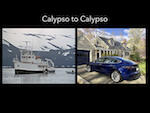Jorma Harju, Jaime E. Pineda, Anton I. Vasyunin, Paola Caselli, Stella S. R. Offner, Alyssa A. Goodman, and alia. 2019. “Efficient methanol desorption in shear instability.” arXiv, 1903, 11298. Publisher's VersionAbstract
We present ALMA maps of the starless molecular cloud core Ophiuchus/H-MM1 in the lines of deuterated ammonia (ortho-NH2D), methanol (CH3OH), and sulphur monoxide (SO). The dense core is seen in NH2D emission, whereas the CH3OH and SO distributions form a halo surrounding the core. Because methanol is formed on grain surfaces, its emission highlights regions where desorption from grains is particularly efficient. Methanol and sulphur monoxide are most abundant in a narrow zone that follows the eastern side of the core. This side is sheltered from the stronger external radiation field coming from the west. We show that photodissociation on the illuminated side can give rise to an asymmetric methanol distribution, but that the stark contrast observed in H-MM1 is hard to explain without assuming enhanced desorption on the shaded side. The region of the brightest emission has a wavy structure that rolls up at one end. This is the signature of Kelvin-Helmholtz instability occurring in sheared flows. We suggest that in this zone, methanol and sulphur are released as a result of grain-grain collisions induced by shear vorticity.
 An invited retrospective on how Alyssa Goodman's many seemingly-unrelated research pursuits and interests evolved, and are actually related.
An invited retrospective on how Alyssa Goodman's many seemingly-unrelated research pursuits and interests evolved, and are actually related.
 These are Alyssa Goodman's slides from her presentation at the 11th edition of
These are Alyssa Goodman's slides from her presentation at the 11th edition of